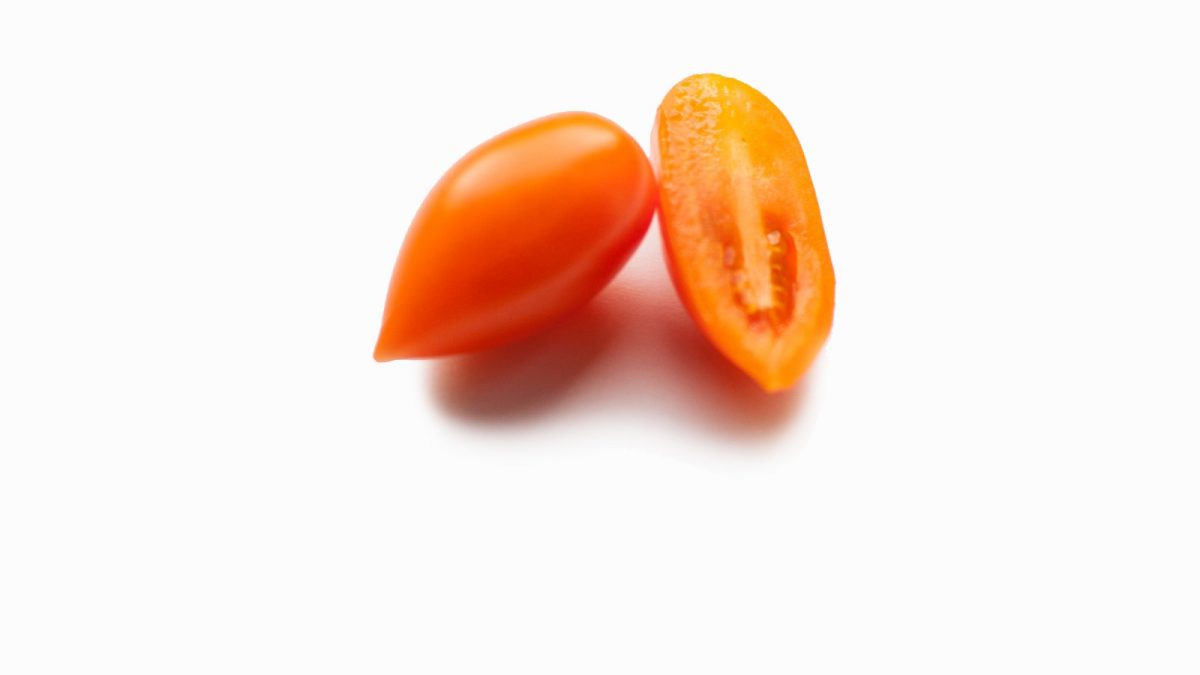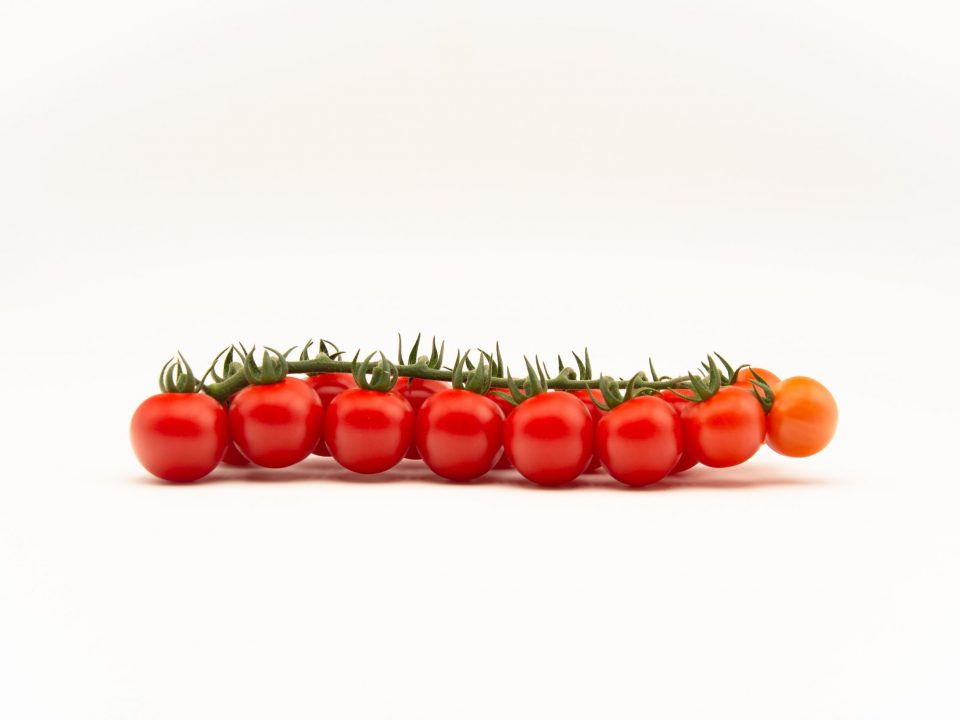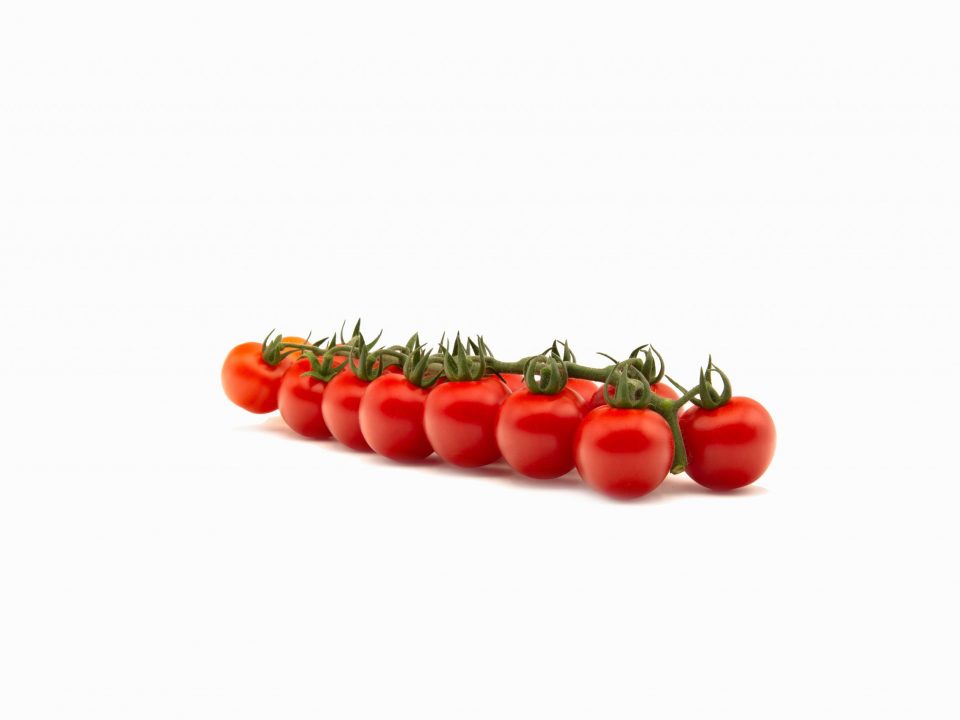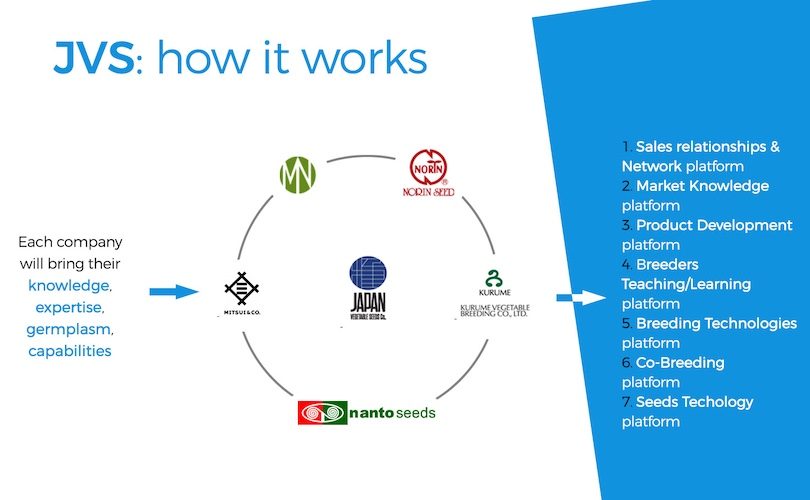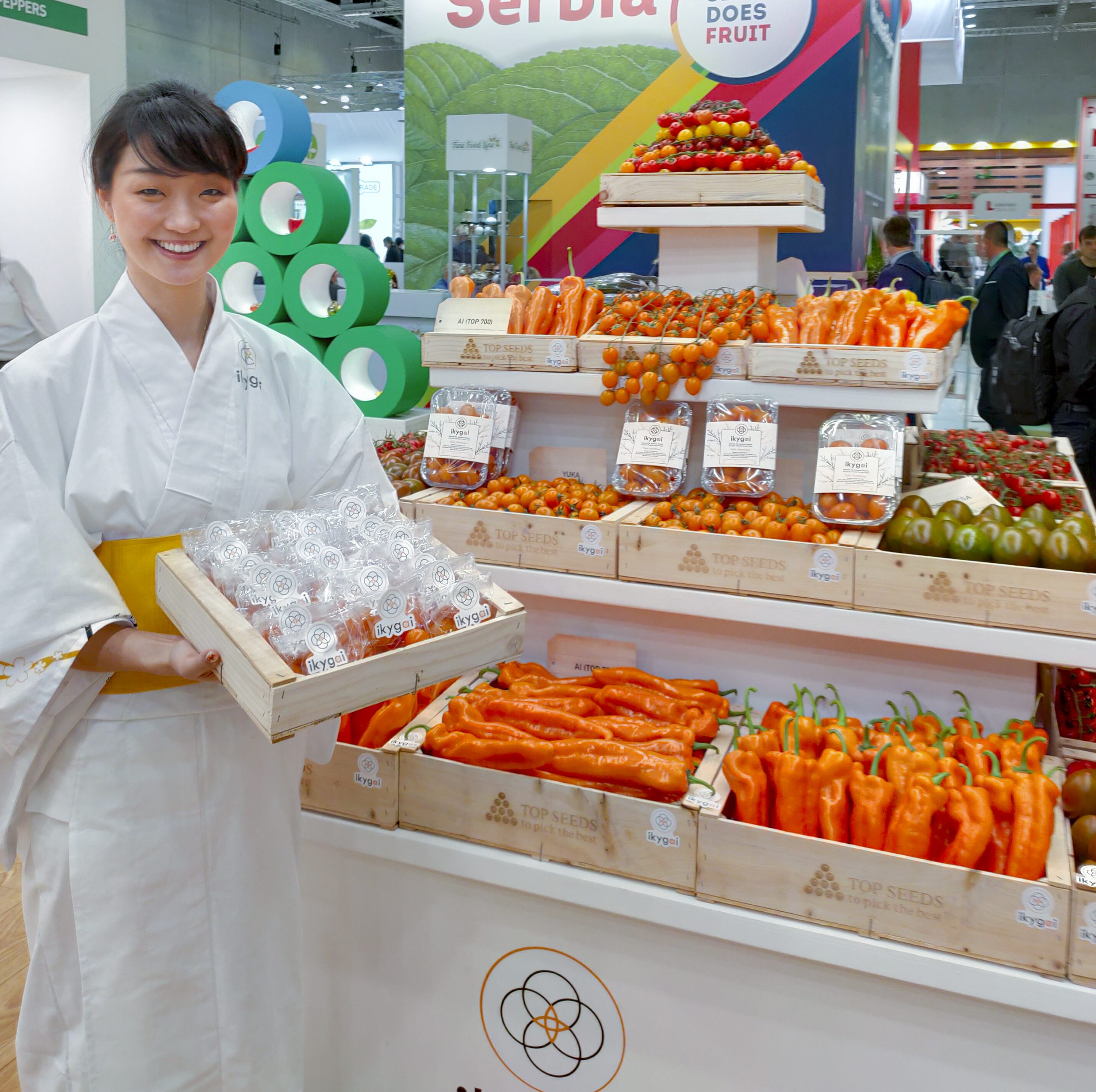
Several UK companies will be in Spotlight as fresh produce innovators at Fruit Logistica
March 17, 2020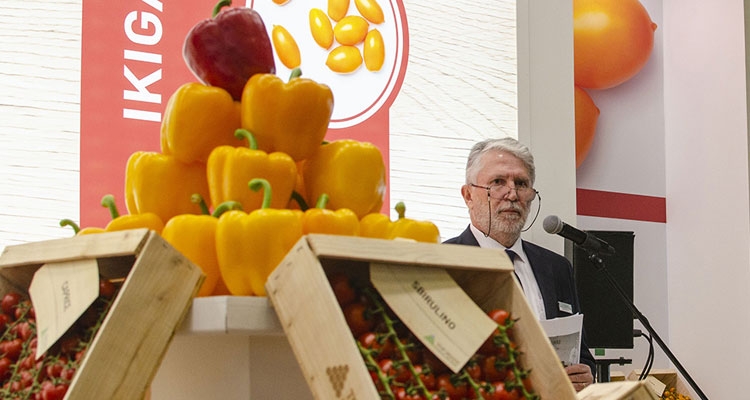
Top Seeds International at Fruit Logistica with two new brands
March 17, 2020Modern agriculture and increasingly
sophisticated consumer tastes up the ante
and require collaboration in varietal
development.
Breeding new varieties is not just about staying ahead of trends, but 10 or 20 years in front of them.
In other words, development of many new fruits or vegetables released tomorrow started before the advent of smartphones.
What will consumers want in 2039? And how will farms, logistics, packaging and shopping itself change by then? These are considerations all plant genetics companies take into account in creating the food of the future, and their best bet for success is collaboration.
No longer is varietal selection the exclusive domain of agronomists and growers. Yield has ceded its crown to priorities such as flavor, ability to grow close to market, how the crop fits with convenience-oriented packaging and new harvesting technologies.
Nowhere is this shift more evident than through the Idea Exchange (iX) events held by Seminis Vegetable Seeds, Inc., a subsidiary of German multinational Bayer Group, which became the world’s largest seed company after acquiring Monsanto in 2018.
“These are events that historically were field days, but increasingly it’s a very different scene,” says Andrew Burchett, industry affair lead for global vegetables based out of Bayer’s U.S. office in St Louis. “You’re actually going to see more parties from the supply chain, as well as
people who may be a bit external to your seed provider-grower conversation.”
This can include companies spearheading automated harvesting or new sensing technology, retailers, processors, chefs, even food bloggers, and the absorption of these different perspectives is changing the dialogue and approach of cultivar development.
“I don’t think anyone today will be in the driver’s seat simply by picking a product or an input. You have to collaborate,” emphasizes Burchett. Burchett notes Bayer’s vegetable businesses are putting more emphasis on enhanced flavor, visual appeal and variety than in the past, but this can often be at the expense of yield. The Delisher cherry plum tomato under the group’s De Ruiter brand is a prime example he claims is “hitting home runs” for consumers.
“There are definitely products that are going to be better at producing the volumes, but this one you could say is almost an exclusive hit for the consumer focused on flavor,” he says.
In a similar vein, Bejo Seeds Inc. of Oceano, CA, is marketing a tomato variety that would not have passed muster before.
“Tasti-Lee is a unique vine-ripe tomato that has tremendous eating qualities,” says Jeff Trickett, the company’s sales and marketing director. “It would never have been selected by the tomato industry as a standalone product in the old commercial environment because it
does not produce the type of yield they want in their typical historical commercial setting.
“But what it does have is enormous consumer end-user values like color, texture and flavor, and because of that the program is able to attain a higher value at retail, and therefore you cancel out the yield disadvantage.”
Finding The Right Balance
As new varieties come through the pipeline, even though lead times are long the life cycles of new cultivars are getting shorter. Companies such as Top Seeds International of Moshav Sharona, Israel, overcome this challenge with brands encompassing a range of varieties with specific attributes.
“Our aim is to develop products that give a special experience, and the most typical example of that is the brand Tomachoc,” says Top Seeds’ chief executive, Gianni Bernardotto. “The unifying factor of that brand is really the shocking chocolate color; it’s very dark green, which during the ripening turns a deep red.”
“It’s very special and reminds us of chocolate,” he says, adding other key characteristics include taste and high lycopene content, with types of tomatoes varying from oval-shaped to cocktail to cherry.”
Bernardotto points to a global change in tomato preferences that is reflected in his native Italy, where in Sicily cherry tomatoes were once a “curiosity” but have since become mainstream.
However, not all niche cultivars introduced will end up so widespread.
“The sensitivity of the consumer has increased dramatically in the past 20 or 25 years, and I don’t think it’s the end,” says Bernardotto. “The role of a seed company like ours is to develop varieties that are bringing something different and new, which will probably not always
be the mainstream.”
Seminis is also taking the approach with strategic partners of branding for a range of varieties, with a rollout this year of yellow-skin cantaloupes marketed under the “Crave” brand.
“Traditionally cantaloupes don’t get the best reputation for tasting good, but these are terrific-tasting cantaloupes, which we are not used to, but they also have the grower qualities that we’re looking for such as shelf life, field holding and ship-ability,” says Bayer Group’s
Burchett.
“There’s a nice balance there; it took us a long time to find that,” he says.
Justin Davis, sales and marketing director at Sakata Seed America in Morgan Hill, CA, says cantaloupes in general have lost a lot of flavor over the past decade, but now the market seeks a revival.
“It’s because of a switch to a different type of longer shelf life, less shrinkage varieties, but the flavor’s terrible,” says Davis. “The market wants to bring that [flavor] back, so there’s a race to get the best flavor with the best aroma that the consumer can enjoy.”
Sakata is known for its Infinite Gold cantaloupe, which Davis says has very high brix as well as a high yield and holding capacity.
“Grown the right way, the advantage of it is all of those things,” he says. “The disadvantage is it’s not a traditional Western shipper cantaloupe, so you have to train the labor force to harvest it, and that’s a trade-off the grower needs to learn.”
He emphasizes the importance of allowing breeders the creative license to think outside the box, especially given large grower-shippers are increasingly looking for unique produce items to set themselves apart.
Taste preferences vary from one person to the next, though, making flavor a largely subjective notion. However, Enza Zaden North America, Inc., of Salinas, CA, aims to find a more precise definition.
The company’s marketing manager, Jean-Francois Thomin, says his team works with local chefs to analyze the flavor of varieties, as well as with universities for consumer studies.
“The secret is actually to assess flavor,” he says. “Flavor is something that’s personal, very subjective, so what we try to do is come up with a method that can help us find where flavor is and test our products with a large consumer group.”
Enza Zaden’s Tribelli mini-conical peppers are one item that has gone through this rigorous process, and Thomin claims the company couldn’t be so innovative if it weren’t for partnerships with growers who test cultivars under real-life conditions.
“In order to best select for the desired traits, Enza Zaden evaluates the Tribelli varieties under various management systems in multiple locations throughout North America,” says Thomin. “We also look at what is happening in the marketplace, where health and convenience have been two strong driving forces.
“By utilizing taste panels, phytochemical analysis and evaluating postharvest handling, we can more accurately predict how a new variety will be perceived by the consumer and stand up on the shelf.”
Grower-Level Feedback Is Key
For Carlos Bon, sales manager at Nogales, AZ-based Divine Flavor, introduction of the Tribelli pepper represents an inflection point for the category.
“That’s how we separate our mini pepper history — before Tribelli and after Tribelli,” says Bon. “This is a rare case where the best eating variety is also the best-looking one; not only is the Tribelli sweeter and crispier, but it also has an even size in all three colors that we never had before.”
“Research shows a large percentage of the consumers buy the mini peppers for stuffing and snacking, and size is very important.”
Processing and mechanical harvesting open the door to new varieties.
While improving the taste is top of mind for breeders today, this pursuit of flavor has not been to the neglect of farming considerations. It’s just that agriculture itself has changed ignificantly and is in the midst of a rapid transformation.
Justin Davis of Sakata says the move to indoor agriculture and vertical farms close to urban centers is changing the way plant breeders are making their selections.
“Before you’d be breeding for something that’s disease resistant and you’re thinking how is this going to react in Salinas, CA or Yuma, AZ,” he says. “Now we’re breeding and thinking how do varieties react to purple lights in a greenhouse in Philadelphia.”
As is also the case for berries grown in substrate pots as soil-borne disease resistance needn’t be tested in varietal selections, cultivar development for indoor-produced veggies can eliminate tests needed for open field crops, and therefore expedite the process.
“How fast can we get new product out the door to help these guys make money in those very expensive operations?” asks Davis. “A variety that won’t work in the field might work in the warehouse, so it’s very interesting to see some of our success with varieties we passed
up in the past because they lacked disease-resistance, but they work great in these indoor spaces.”
“It’s refreshing to get a new look at it, and it’s exciting to work with these new technologies and look at food from a different angle.”
Technological changes coupled with labor cost pressures are prompting changes in production, leading to a major shift toward mechanically harvested cabbage.
“Before, you’d grow cabbage flat on the ground,” says Davis. “Now there’s a little stalk that’s like a lollypop almost that comes up so the machine can harvest it.”
Although a breeder can take issues such as this into account, the situation is more challenging if the production systems aren’t there to support it, thus reinforcing the importance of collaboration. Take Kalettes for example – a hybrid brand of kale sprouts from
Europe where the crop is mostly machine-harvested.
“You can do the same mechanical harvest here in the United States, but Brussels sprouts growers here have modified their equipment just simply for Brussels sprouts,” says Kraig Kuykendall, sales manager at Tozer Seeds America, LLC in Santa Maria, CA. “So you’ve got to
weigh the cost of hand-harvesting some of these products like Kalettes, and that changes the whole perspective of profitability.”
In addition, United Kingdom consumers accept Kalettes as a seasonal item, but that just wouldn’t fly in the U.S. market.
“Here in the United States, you can’t have anything else on the shelf if it’s not 365 days a year,” Kuykendall says. “You have to go up and down latitudes [for production] to make this work.”
Tricket of Bejo Seeds notes varietal selection also needs to keep retailer packaging preferences in mind, as well as trends around valueadded items.
“The spinach market has gone heavily toward savoyed or semisavoyed leaves, because they stay fluffy and better in the bag, whereas smooth leaves will stick to the surface and not look very nice,” he says. “At Bejo, we also have a giant hybrid kohlrabi that is economical to process; most kohlrabis are too small to be economically processed into sticks or noodles.”
The company has a six-month foodservice initiative this year to distribute kohlrabi pasta, and eventually the plan is to introduce a new assortment of kohlrabi-based products.
“If you’re a grower and have your own packaging capability to provide finished products to retail, I would take a strong look at the opportunity to work with seed producing companies to acquire licensing or rights to unique proprietary varieties that give you an advantage over everybody else,” says Trickett. “Then I would look to brand and lock in a market with those products to retailers.”
Finding Commercial Success
One grower that has been proactive with new cultivars is Mann Packing of Salinas, CA, which along with capitalizing on convenience trends with its nourish bowls has championed unique varieties of brassicas.
“We launched both Broccolini SweetStem Broccoli and Caulilini SweetStem Cauliflower to our foodservice customers before retail, and it has been a really effective approach,” says Loree Dowse, Mann Packing’s director of creative marketing. “We find chefs are always receptive to something new and different, while consumers need a bit of exposure before they’ll proactively pursue a product.”
Dowse says Mann has strong relationships with seed companies, which tend to see it as an innovator and will frequently show the grower new products or seed trials before anyone else.
“It’s something they’ve come to expect from us, and it’s something that really gets our blood pumping, so it works out well for everyone,” she says, clarifying not every variety goes well, though. “Even if we’ve trialed a product for an extended period, we can still run into roadblocks with growing, harvesting, or simply the market not responding to something the way we predicted.”
Mann Packing is owned by Del Monte Fresh Produce of Coral Gables, FL, which itself has an active research and development program to explore new varieties.
“Fresh pineapples are now a staple in all produce departments in North America,” says vice president of marketing Dionysios Christou. “With the introduction of the Del Monte Gold Extra Sweet Pineapple in the mid-1990s, Del Monte has helped revolutionize the category and is
credited for a 250 percent increase in consumption of fresh pineapple in the United States.”
One fruit category that has witnessed tremendous growth buoyed by new varieties is table grapes, and International Fruit Genetics (IFG) of Bakersfield, CA, is one of the leading breeders that has contributed to that success.
“There’s a very big funnel with the numbers we’re working with on the front end to achieve all the commercial characteristics we’re looking for in a good variety,” says Andy Higgins, chief executive. “We might do hundreds of thousands of crosses a year evaluating 20,000 seedlings, and of those seedlings the first time we have an evaluation we may choose to keep 100, and when we get to year two of fruiting we may take that down to 50.”
He says the company’s leading sellers include Sweet Globe, Jack’s Salute, Sweet Celebration, Sweet Sapphire and Cotton Candy. Bon of Divine Flavor says demand for Cotton Candy grapes has become “almost like a cult,” with incredible feedback from consumers
through email, social media posts and phone calls.
“We keep growing on this variety and are planting it in different areas,” says Bon. “By 2020 we will have Cotton Candy in the market for 10 months of the year, and three of those with organic Cotton Candy.”
Build Consumer Interest
Higgins says the trick to varietal development is working backward, starting first with consumer interest, and then on grower-oriented aspects like disease-resistance, labor saving and yields.
“We’ve got very creative retailers that are saying new varieties play a significant role in driving attention to the category,” he says. “Retailers might say ‘help us build a program where 15-20 percent of the offering is made up of new [varieties], and make it easy to merchandise, communicate and visualize for the consumer so that when they walk into the produce department they’re inspired and want more.’ ” It is a similar story for apples. Kathryn Grandy, director of marketing and operations at Proprietary Variety Management (PVM) of Yakima,
WA, says consumers are looking for sweeter apples with high levels of juice and a very strong crunch.
“Everything is moving to branded varieties, and right now there are about 37 branded varieties available,” says Grandy. “They’re not all going to make it — one of the reasons is they don’t have sufficient volume to be in the market for more than a few weeks, and the other is
the amount of marketing support.”
She adds the sweet spot for a new apple variety, and for PVM’s Cosmic Crisp brand, is achieving great taste attributes as well as making production more viable.
“With Honeycrisp, people love the name and the flavor. It’s not necessarily the most beautiful apple, and it’s very difficult to store,” she says. “With Cosmic Crisp, it’s been researched for 20 years, and it has the flavor, the shape, the color and the juice, but it also appears to be
much more grower-friendly with much higher pack-outs, and it’s an apple that stores extremely well.”
Both PVM and IFG breed cherry varieties, as well, which have even longer lag times than apples and grapes. A common theme is the search for earlier and later cherries so the sales cycle can be extended, while improving eating characteristics of cultivars grown in those periods, as well.
“We think there is room to improve the eating experience so directionally where we’re going with that is increasing the texture, the mouthfeel as well as increasing sugars,” says Higgins of IFG. “We’ve got test varieties that have 50% more average brix levels than what
traditional cherry varieties look like.”
“Often times, particularly the early ones will set the tone for the season, so let’s get it off to a strong start.”
Higgins also points to new low-chill cherry varieties that could open up entirely new production regions such as Mexico.
“Many of them are typically in drier parts of the world, so if you’re in a part of the world that doesn’t have late spring rains, the whole consideration of fruit cracking is taken off the table,” he says. The cherry breeder agrees there is a clear parallel with what is taking
place in berries.
“We are now producing a much higher percentage of our total supply within trucking distance of the market,” says Soren Bjorn, president of Driscoll’s of the Americas based in Watsonville, CA. “This is a huge development in blueberries, really driven by the Australians with people like Costa Group, Mountain Blue and OzBlu, where they have developed these low-chill, almost no-chill blueberry genetics. The way you get the best result is you select in the environment where you’re going to produce, instead of selecting in a proxy environment and trying to make the varieties work.”
Like his peers in the vegetable sector, Bjorn adds that in the past berry breeding was very focused on high yield, but a shift has been underway to bring back flavor.
In blackberries this has been easier to achieve because margins have been rather high, but in strawberries the task is more challenging, and raspberry improvements have been more recent. “I think you’re going to see another revolution in that for raspberries where the flavors are really going to improve, and for the California strawberry industry that’s what they need to do.”

